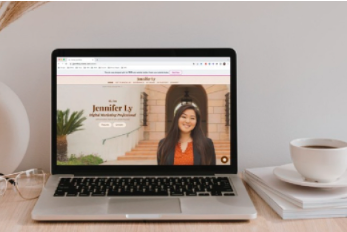As more students pursue education online, having a digital portfolio has become an essential tool for showcasing academic growth, creative work, and career readiness. Whether you’re in high school, college, or a professional certification program, a well-organized digital portfolio can make your achievements more visible and accessible. Here’s how to build one effectively while studying online.
1. Understand the Purpose of a Digital Portfolio
A digital portfolio is more than just a collection of files—it’s a reflection of your skills, accomplishments, and learning journey. For online students, it helps bridge the gap between virtual learning and real-world opportunities by providing a central place to demonstrate coursework, projects, and personal development.
2. Choose the Right Platform
There are several user-friendly platforms that allow students to create digital portfolios without needing coding experience. Tools like Google Sites, Wix, Weebly, and Adobe Portfolio offer customizable templates that make it easy to organize your content. Choose one that fits your design preferences and long-term goals.
3. Include a Clear Introduction
Start with a brief bio that outlines who you are, what you’re studying, and your academic or professional aspirations. This helps viewers quickly understand the context of your work and what you bring to the table.
4. Highlight Key Projects and Assignments
Select your most impactful coursework, such as research papers, multimedia projects, presentations, or group collaborations. Include a short description of each item, what skills it demonstrates, and any challenges you overcame. If applicable, add links, images, or videos to make your portfolio more dynamic.
5. Organize Content by Subject or Skill Area
Make it easy for viewers to navigate your portfolio by categorizing your work. For example, you might have sections for writing samples, STEM projects, digital media, or leadership experiences. This structure shows that you can manage information logically and clearly.
6. Keep Your Portfolio Updated
As you complete more online courses and assignments, update your portfolio regularly. This ensures it reflects your current capabilities and growth. Keeping an active portfolio also shows future educators or employers that you’re serious about continuous learning.
7. Add Personal Reflections
Don’t just showcase what you did—explain what you learned. Include short reflections that describe how each experience contributed to your academic and personal development. These insights demonstrate self-awareness and maturity.
8. Use a Professional and Accessible Design
While creativity is encouraged, avoid cluttered layouts or hard-to-read fonts. Use clean formatting, high-quality visuals, and accessible color schemes. Make sure your digital portfolio works well on both desktop and mobile devices.
9. Protect Your Privacy
Be mindful of what personal information you share. Avoid posting sensitive data like your full address, personal phone number, or student ID. If you’re including group work, ask your teammates for permission before sharing it publicly.
10. Share Your Portfolio Strategically
Once your portfolio is polished, you can share the link in applications, resumes, or networking profiles. Many online programs even encourage students to submit portfolios as part of class projects or career development tasks.
Final Thoughts
Building a digital portfolio as an online student not only enhances your learning experience but also helps you stand out in an increasingly digital world. By taking the time to curate and present your work thoughtfully, you’re preparing yourself for academic success and future opportunities.














